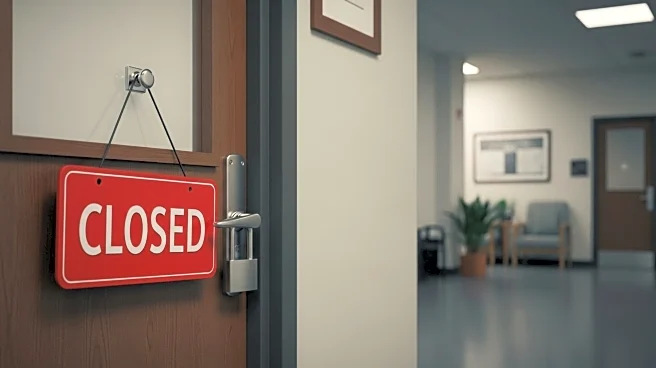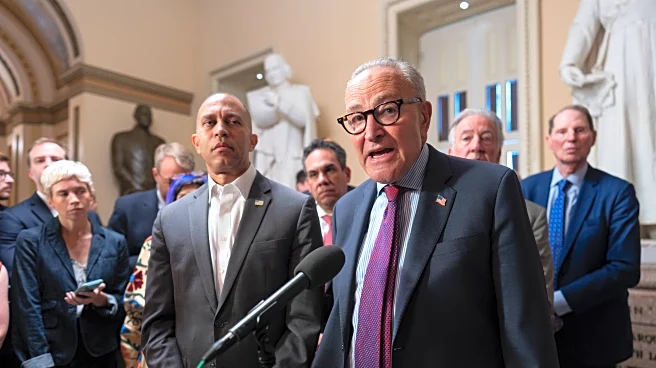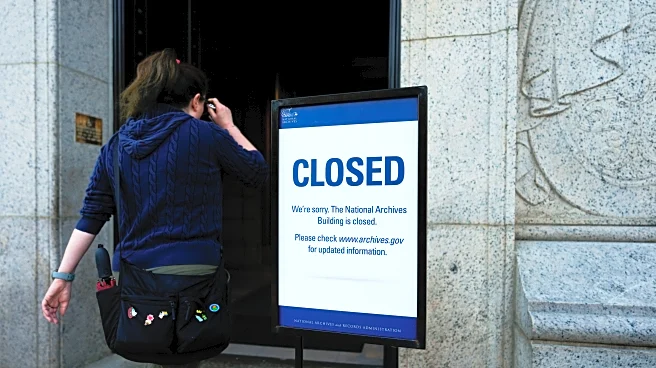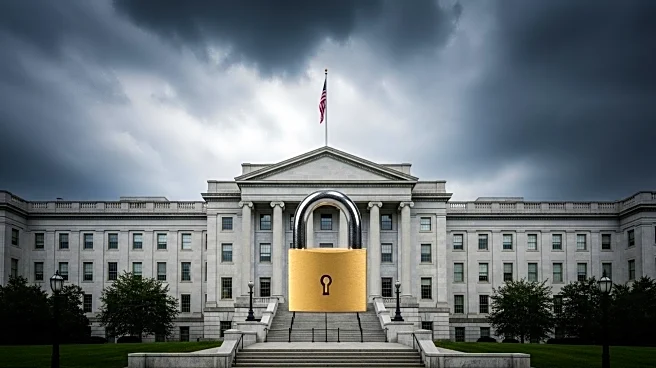What is the story about?
What's Happening?
Traders in prediction markets are forecasting that the ongoing U.S. government shutdown could persist for nearly two weeks. According to Kalshi, a federally regulated prediction market, the current expectation is that the shutdown will last approximately 11.1 days. This prediction has increased significantly in recent days as negotiations in Congress have stalled. On another platform, Polymarket, traders estimate a 38% probability that the government will not reopen until October 15 or later. In contrast, the likelihood of a resolution between October 6-9 is 23%, and between October 10-14 is 22%. Only 14% of traders believe that lawmakers will reach an agreement in the immediate future, specifically between October 3-5.
Why It's Important?
The potential extension of the government shutdown has significant implications for various sectors in the U.S. economy. A prolonged shutdown could disrupt federal services, delay government contracts, and impact federal employees who may face furloughs or delayed paychecks. This uncertainty can also affect financial markets, as investors may become wary of the economic stability and the government's ability to manage fiscal responsibilities. Additionally, the shutdown could influence public opinion and political dynamics, potentially affecting upcoming elections and legislative priorities. Stakeholders across industries, including defense, healthcare, and public services, may experience operational challenges and financial strain as a result.
What's Next?
If the shutdown continues, pressure will likely mount on Congress to reach a resolution. Political leaders may face increased scrutiny from constituents and interest groups demanding a swift end to the impasse. The economic impact could prompt businesses and advocacy groups to lobby for a resolution. As the shutdown progresses, federal agencies may implement contingency plans to mitigate disruptions. The situation could also lead to intensified negotiations and potential compromises in Congress to restore government operations.
AI Generated Content
Do you find this article useful?















